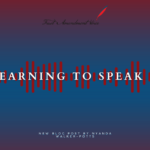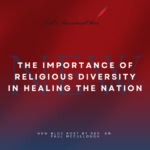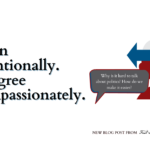
by Dan | Jun 25, 2019 | Newsletter, Uncategorized
Dear Friends,
Many of you may have noticed we kicked off a membership drive last week. Please consider becoming a paid member to help us bring FAV programming to those who lack the resources or access. We are grateful to a generous donor who provided matching donations to help incentivize our campaign. Double your impact now due to the matching donations. More details below. Paid membership comes with exclusive benefits and the knowledge you are helping FAV reach those who may not feel they have a voice in their communities.
This month’s good news story features a community partner, the i5 Freedom Network. The Executive Director, Brenda Wells, started the organization to make an impact against human trafficking. She is currently collaborating with FAV to hold a community forum in San Clemente to raise awareness about illicit massage parlors and to pass a city ordinance to make it more difficult for those establishments to open up. Culling best practices from other nearby cities, Brenda proposed measures that would significantly strengthen the current ordinance. By reviewing websites that feature illicit establishments in town, Brenda assessed that almost one dozen illegitimate establishments operate in San Clemente. These are usually run by organized crime. Most people are unaware of this going on. The i5/FAV public forum will feature speakers to educate the public, including from law enforcement, legitimate massage establishments, city officials, and a survivor of massage parlor trafficking.
The goals of the public panel discussion are twofold: 1) gain momentum to pass a significantly strengthened massage parlor ordinance and 2) raise public awareness on the importance of individuals lending their voice to important community conversations. Brenda is a heroine in the local community, but more importantly, will inspire average citizens to get involved in making their city safer and preventing trafficking from occurring in San Clemente. First Amendment Voice is proud to partner with Brenda and the i5 Freedom Network.
Citizenship is not a spectator sport! If you like our newsletter, please share with a friend!
Steve
June Membership Drive
Please consider supporting FAV efforts to push back against fear and apathy and inspire people to #FindTheirVoice and contribute to public discourse. Remember Gary’s story from the April newsletter? If you didn’t get a chance to read it, click the link. Story’s like Gary starting an Instagram contest to promote understanding about Unity and Division in our communities are why FAV exists. Basic membership costs just $25/ year and offers an automatic $25 discount on Symposium registration, in addition to exclusive benefits like our national coffee talk live videoconferences.
Would you like to help others #FindTheirVoice as well as enjoy the benefits of unique FAV programming? Consider becoming a Sustaining member at either the $1,000 or $500 level. Sustaining members get an invitation to our VIP tour of the Capitol Building the evening before the National Symposium in Washington, D.C.
DOUBLE YOUR IMPACT
Thanks to the generosity of a FAV donor, we have two $5,000 matching grants. One to help stimulate the membership drive and the other to challenge $1,000 donors to step up and support FAV efforts to extend our programming to those who might not have the resources to attend without assistance. FAV routinely convenes very diverse audiences who get the opportunity to interact with each other in enriching environments. Please help us achieve our goal. Any level of contribution helps us reach the $5,000 mark. Give here
In The News
A report from the Hudson Institute has interesting statistics on the state of anti-Semitism in the U.S. More details here.
This is a fascinating piece about young people who watched YouTube content, both far right and left, and how it can sway beliefs. It’s a fascinating look at one young man’s journey. Read more.
Save the Date
4th Annual National Symposium September 20-21 – the theme is “Polarization.” Paid members get an invitation to an exclusive VIP tour of the Capitol Building after hours. Spaces are limited, so register soon. Sustaining level donors at the $1,000 level get two tickets to the VIP tour while $500 level donors get one ticket. Guarantee that you get the experience to explore polarization in our society.

by Dan | Jun 12, 2019 | Uncategorized
 There has been quite a bit of controversy surrounding students’ political expression on public school campuses in recent years.
There has been quite a bit of controversy surrounding students’ political expression on public school campuses in recent years.
From the self-proclaimed, Trump-supporting teacher who said she was simply following orders when censoring a student’s “Make America Great Again” T-shirt in a school yearbook photo to the teen who complained against the school after his “MAGA” hat was blurred in his school yearbook, there are multiple debates happening around the country about what public schools should do about their students’ political expression – without risking a violation of their First Amendment freedoms of self-expression.
Unsurprisingly, these are just some of the many school dress code controversies we’ve seen in the news over the past several years, and it’s not isolated to the United States, either. France has had its own share of controversy over so-called “burqa bans” and Austria recently banned Muslim headscarfs in primary schools.
Whether it’s political attire, religious garb, or other contentious forms of students’ expression through fashion, should public schools be doing more or less to regulate what their pupils are wearing while on campus? Let’s examine both sides of the issue as it’s happening in the United States:
Arguments in Favor of Dress Code Bans
Dress code bans in the United States typically revolve around gendered fashion expressions, such as short shorts/skirts and visible bra straps for girls or sagging pants for boys. However, the upswing in political interest among minors has led to these dress code controversies involving political expression (most frequently involving Trump/MAGA, though this trend is unlikely to end when Trump leaves office, regardless of the next president’s political affiliation).
By banning political expression on public school grounds, educators and administrators (as public employees) risk violating students’ First Amendment rights. However, those in favor of these dress code prohibitions on political attire have argued that the existence of any kind of dress code could constitute a violation of a student’s freedom of expression and yet, multiple court cases have upheld the validity of school dress code regulations in other areas.
Additionally, those in favor of the bans argue that politicized attire can detract from learning and/or create a hostile learning environment for some students whose identities are inextricably linked with certain forms of political attire (e.g., Hispanic students or children of immigrants in class with another student wearing a “Build the Wall” t-shirt).
Arguments Against Dress Code Bans
Those who are against schools banning forms of political speech/expression frequently cite the Tinker v. Des Moines Supreme Court case, in which the Supreme Court sided with students who were suspended for wearing black armbands to protest the war in Vietnam. Upon reaching a decision the majority argued, “students don’t shed their constitutional rights at the school house gates.”
Thus, opponents of dress code bans believe there should be few (if any) restrictions on what students can and cannot wear to school when it comes to political attire. This debate will likely go on for many more years without a clear decision covering every case that comes up. But in the meantime: What do you think? Should students be able to wear whatever political clothing they want on public school campuses or should this form of self-expression be banned?
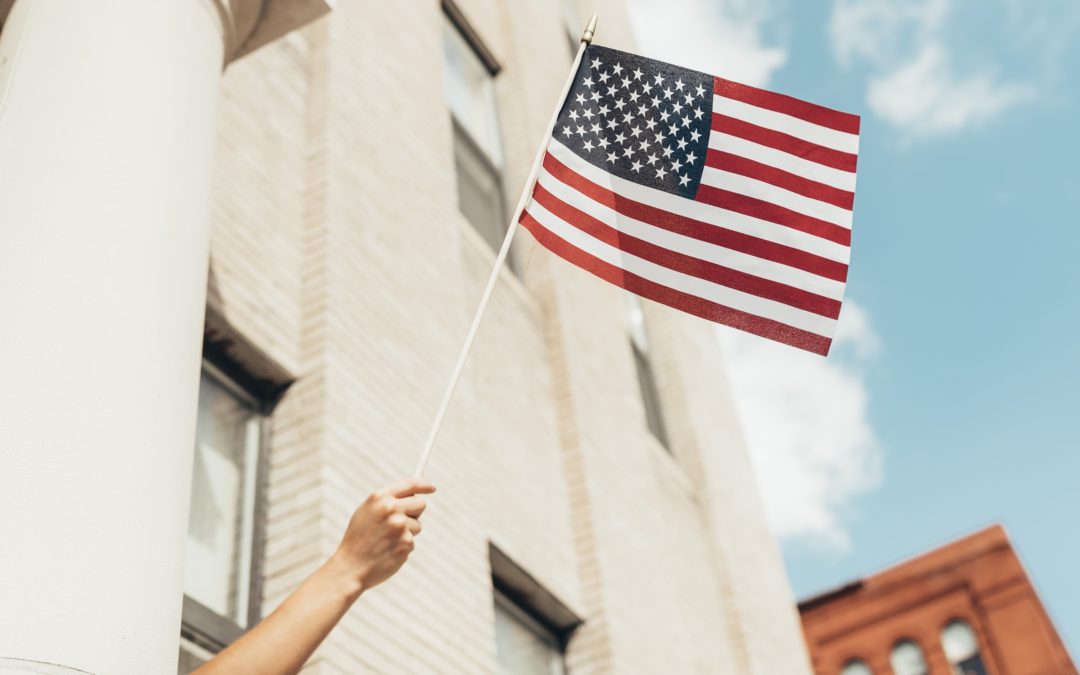
by Dan | May 30, 2019 | Uncategorized
Dear Friends,
I spent some time reflecting on a combat deployment yearbook last weekend as I worked on the 4th draft of a book manuscript. It was appropriate on Memorial Day, not only to consider those who made the ultimate sacrifice, but also to renew my own vigor in response to service. It reminds me of the message I gave troops on Memorial Day in combat. Do we want to truly honor those who laid down their lives? Then we should not only remember them, but we should live our lives in a way to honor their sacrifice. We should not only serve great causes but also contribute to the public discourse as conscientious citizens, whether at the school board meeting, the local VFW, Rotary Club, or faith group. We should model citizenship for our children as a means to demonstrate why democracy requires vibrant citizens. That is a way to really show our appreciation. After all, we like to say that the men and women who gave the fullest measure did so for our freedom. If we believe that, we should exercise that freedom.
For example, a teacher named Amy recently taught her third grade class about environmental awareness. After explaining some of the hazards that scientists and advocates have pointed out, she challenged the kids to look for ways to make a difference in their own lives. They worked in groups and considered different ideas that might reduce waste in their school, at home, or by helping make adults more environmentally conscious. One of the groups proposed eliminating the plastic milk containers in the cafeteria that use straws and are not made of recyclable material. They asked why the school did not use the traditional recyclable milk cartons that required no straw? Struck by the common sense of the idea, Amy encouraged her students further. They gathered a list of over 400 names on a petition. They sent a letter to the principal, and Amy reached out to the district level official in charge of managing the school’s cafeteria program.
What struck me about this example was how uncommon it seemed. Amy could have simply commended the students for the great idea. She might have mentioned it to her teacher colleagues in the faculty lounge, and that could have been it. Instead, she modeled to the students how civic-minded individuals affect change in their community. The students “learned by doing” after receiving their environmental lesson. And so, the lesson continues throughout the school year. The district level leader addressed the students in class last week. She explained the process of making changes to the procurement system for the cafeteria. She also approved the students to test a pilot program to assess the impact of their idea. The students are also learning that good ideas are only the start of impacting their environment (or affecting any change). Thomas Edison stated that genius was 1% inspiration and 99% perspiration. That’s a good life lesson for citizens. Amy’s students are learning that as well.
While Memorial Day Weekend is a time for reflection, a time to be inspired by examples of tremendous sacrifice, the rest of the year is a time for participation at all levels of community and family. In that way, you will both remember those who have sacrificed as well as honor their memories through your service to the community. Serving something greater than yourself tends to bring happiness in life.
Citizenship is not a spectator sport! If you like our newsletter, please share with a friend!
Steve
2019 National Symposium
#FindYourVoice at this year’s National Symposium where we will explore polarization, its current impact on society, and the role each of us plays.
Mark your calendars for September in Washington, D.C. As soon as FAV confirms a venue and date, (either September 14th or 21st) we will notify all.
Spotlight on our Partners
First Amendment Voice is a community partner for the Global LA Summit held on May 10, 2019, which featured two panel discussions on press freedom. They also hosted a Difficult Conversations workshop featuring Kern Bear the following day. FAV is grateful for the Pacific Council’s partnership and support to raising awareness and inspiring civic action amongst their members. >>LEARN MORE
In the News
This Religion News Service reports on findings of this year’s American Muslim Poll, the fourth annual survey of U.S. faith communities conducted by the Institute for Social Policy and Understanding in Washington, D.C. READ MORE
You may have heard about the controversy over a police raid of a journalist in San Francisco that continues to make national headlines. The following Columbia Journalism Review piece provides an overview. READ MORE

by Dan | May 22, 2019 | Uncategorized
The number of headlines about the First Amendment — particularly about free speech issues — are seemingly endless nowadays, but what’s happening on college campuses, specifically, in 2019? Here are three major free speech issues to be aware of this year:
President Trump’s Comments on Free Speech in Higher Education
In a recent speech before the Conservative Political Action Committee, President Trump suggested he might sign an executive order to guarantee free speech protections on college and university campuses — and revoke funding for those institutions if they did not adequately protect every students’ freedoms, regardless of political affiliation.
An issue with this proposed order, a First Amendment rights lawyer explained, is that it could potentially allow the executive branch to unilaterally determine which campuses are pro or anti-free speech. In other words, this executive order could allow the president to pick and choose which colleges and universities should lose funding over free speech issues on their campuses, while others may fly under the radar if the president doesn’t deem their offenses serious enough to warrant a review and possible revocation of federal funds.
Pledge of Allegiance
In the past few years, there have been plenty of controversies surrounding the national anthem. In 2019, the Pledge of Allegiance is back in the news, after a California community college’s Board of Trustees removed the Pledge from its regular proceedings due to what the board’s president described as “reasons relating to its history and symbolism.”
The school was inundated with calls, mail and electronic messages allegedly threatening the Board and the school for its removal of the Pledge of Allegiance. In a late January Board of Trustees meeting, one of the members recited the pledge while holding a small American flag, only to be drowned out by vocal protesters. In another Board meeting just two weeks later, the Board voted to reinstate the Pledge of Allegiance for its regular meetings once again.
Limited Academic Freedom for Adjunct Faculty
A final (ongoing) issue affecting higher educational institutions in 2019 is the adjunct faculty crisis. Adjunct faculty members are paid less (with no benefits) and have substantially less job security than their tenured counterparts (adjuncts can teach multiple classes one semester then find out there are no available classes for them the following semester). Due to this lack of job security, adjuncts are constantly on edge about what they can and cannot say in the classroom, to colleagues, and/or in committee and departmental meetings.
This is arguably an implicit violation of adjunct instructors’ First Amendment rights, as nobody is outwardly telling them what they can and cannot say. Rather, they can be penalized for any unwelcome speech by not having their teaching contracts renewed for another semester. This means that job security is an essential issue for non-tenured faculty in 2019 because it is key to protecting their free speech rights in the classroom and on campus.
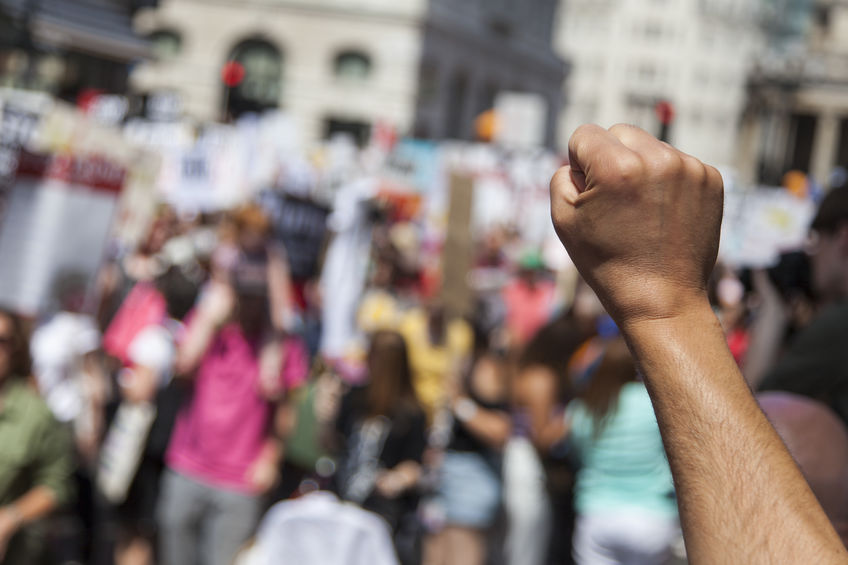
by Dan | May 8, 2019 | Uncategorized
 Everyone knows about freedom of speech, the press and religion in the First Amendment, but surveys have shown that a majority of Americans either don’t know or forget that the freedom to petition and to peacefully assemble are also included in the First Amendment. While “peaceful assembly” may refer to public congregations of individuals for any reason, public protests are most commonly associated with our freedom to assemble.
Everyone knows about freedom of speech, the press and religion in the First Amendment, but surveys have shown that a majority of Americans either don’t know or forget that the freedom to petition and to peacefully assemble are also included in the First Amendment. While “peaceful assembly” may refer to public congregations of individuals for any reason, public protests are most commonly associated with our freedom to assemble.
In an era of online petitions, digital boycotts of companies, and other forms of cyber-activism, are public protests still effective when it comes to changing social beliefs or political systems? As this opinion piece at Ideas.TED.com points out, there are plenty of ways to build a successful social movement, and you might be surprised to learn just how successful some protests are these days.
Increasing Public Awareness
Thanks to the Internet, we’ve come a long way from the 1960s and 1970s protests against the Vietnam War, which didn’t necessarily end the war but did transform public opinions about the war. Nowadays, we still see small-scale, local protests and large marches, but we’re also witnessing globalized movements on an unprecedented scale.
Take the March 15, 2019, global student strike for climate change: started by a 16-year-old Swedish girl, the student walkout encompassed more than 990 schools across 90+ countries, largely thanks to social media organizing. The purpose behind the strike was to generate greater public awareness (and concern) for climate change, which teenagers and young adults say will negatively impact them the most because they will be on Earth for decades longer than their parents and grandparents’ generations.
Organization, Messaging & Nonviolence
Research conducted by The Washington Post journalists found that successful protests typically share 3 traits: they’re well-organized, they have an appealing message, and they do not resort to violence.
On the issue of organization, it’s important that prominent organizers of a protest or movement share similar ideals and goals to avoid dividing their cause into separate factions. An example of this is the Standing Rock protests against the Dakota Access Pipeline project in 2016. The protests were largely organized by social media-savvy young adults and their communities, which helped them centralize their platform and ultimately persuade the Army Corps of Engineers to deny a construction permit to the would-be pipeline builders (that decision was later reversed under the Trump Administration and lawsuits remain to this day).
On the issue of messaging, a protest’s message(s) should resonate with a wide range of people, beyond just those directly involved in the protest itself. An example of this would be the recent teacher strikes around the United States, which started over concerns related to low pay, overcrowded classes, few classroom resources, and limited support from administrators and districts. Since a majority of Americans attended public schools when they were younger and millions more want the same high-quality educational opportunities for their own children, the messages underlying the teachers’ strikes resonated with a massive audience.
On the issue of nonviolence, successful protests are able to maintain public support by encouraging participants to refrain from violence, verbal harassment, and other socially unacceptable forms of expression. An example of this would be the “lactivist” protests at Applebee’s in 2007, in which breastfeeding mothers protested against the restaurant’s discriminatory policies (making women breastfeed their infants in a restroom stall, when most states have already legalized public breastfeeding). This nonviolent display of protest ultimately led Applebee’s to issue a statement that it would be more welcoming of nursing mothers in the future.
Are Protests Really Effective?
Many protests start out strong then fizzle out due to a variety of intergroup or situational issues, but at the end of the day, it’s not always about whether protests are effective or ineffective. Instead, we should remember that peaceful protests are part of our Constitutionally-guaranteed First Amendment rights, and protecting those rights is something we should all agree on.



 There has been quite a bit of controversy surrounding students’ political expression on public school campuses in recent years.
There has been quite a bit of controversy surrounding students’ political expression on public school campuses in recent years.


 Everyone knows about freedom of speech, the press and religion in the First Amendment, but surveys have shown that a majority of Americans either don’t know or forget that the freedom to petition and to peacefully assemble are also included in the First Amendment. While “peaceful assembly” may refer to public congregations of individuals for any reason, public protests are most commonly associated with our freedom to assemble.
Everyone knows about freedom of speech, the press and religion in the First Amendment, but surveys have shown that a majority of Americans either don’t know or forget that the freedom to petition and to peacefully assemble are also included in the First Amendment. While “peaceful assembly” may refer to public congregations of individuals for any reason, public protests are most commonly associated with our freedom to assemble.

